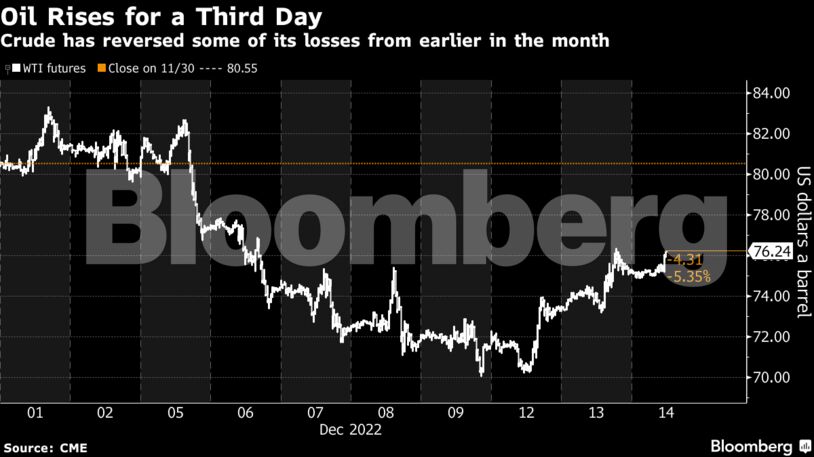Oil prices could increase next year as sanctions squeeze Russian supplies and demand beats earlier forecasts, the International Energy Agency said in a report. Recent data are already showing consumption has been stronger than expected, the agency said.
Still, crude remains on track for its first back-to-back quarterly decline since 2019 on concerns about the global economy. Recent price declines have seen some, including Goldman Sachs Group Inc. trim their outlooks for next year, but signs of slowing inflation in the US have helped push prices higher over the last few days.
“Positioning is now much less distorted than it has been for a while, and hence, perhaps for the first time in six months, short-term risk-reward is now skewed toward higher prices,” Standard Chartered analysts including Emily Ashford wrote in a report.
Meanwhile, TC Energy Corp. is targeting a partial restart of a segment of the Keystone oil pipeline on Wednesday and full resumption on Dec. 20, according to people familiar with the matter. Bad weather has hampered restart efforts. The link was shut earlier after a spill that is poised to be one of the worst in the US since 2010, and a resumption would provide bearish signals to the market.
Prices:
- WTI for January delivery was rose 1.1% to $76.23 a barrel at 10:32 a.m. in London.
- Brent for February increased 1% to $81.50 a barrel.
But traders are looking toward China for bullish news as the nation ramps up vaccination efforts in the rapid dismantling of its Covid Zero policy. A surge in virus cases has raised concerns about near-term energy demand, but the easing of restrictions is expected to boost commodity consumption in the long term.
The industry-funded American Petroleum Institute reported US commercial crude inventories rose by 7.82 million barrels last week, according to people familiar with the figures. Stockpiles at the key oil storage hub at Cushing, Oklahoma, as well as supplies of gasoline and distillates also gained.
Share This:




 CDN NEWS |
CDN NEWS |  US NEWS
US NEWS 





























